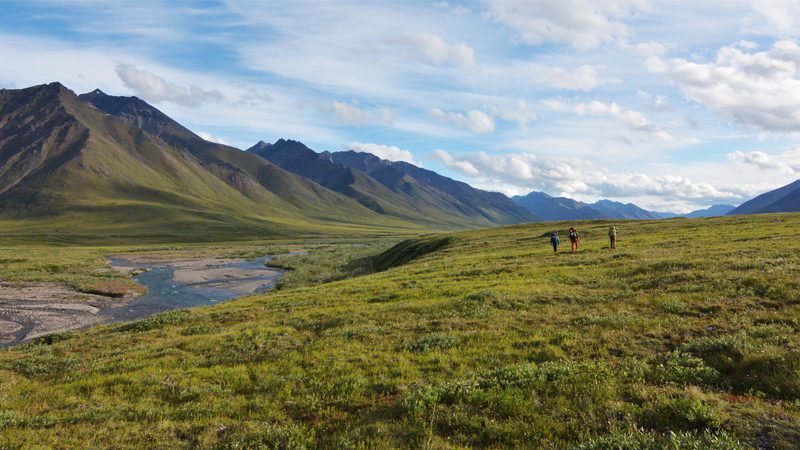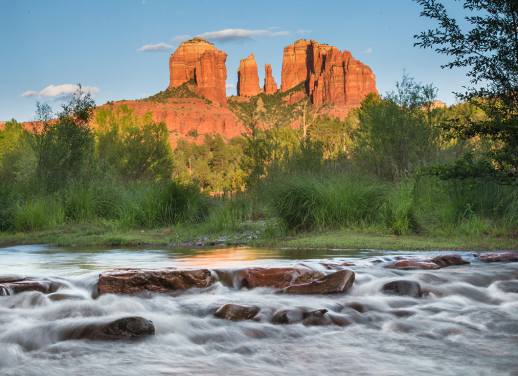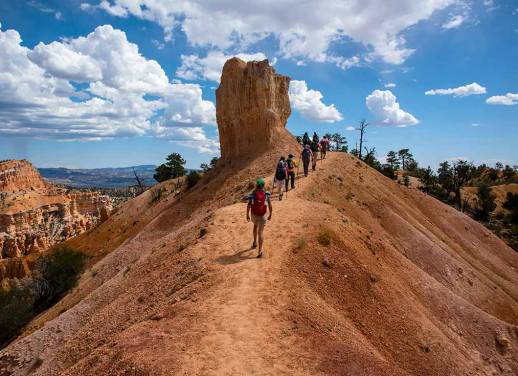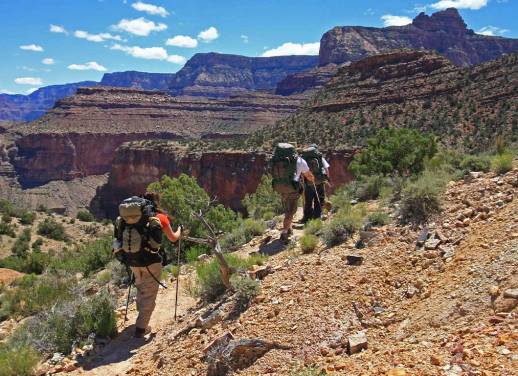Alaska’s national parks can offer sparser, wilder experiences than their more familiar Canadian counterparts (it helps when your address is basically PO Box, End Of The Earth). But with some parks bigger than small European countries, which of them should be on your travel hit-list? How do you separate one spectacular glacier-filled vista from another? And, with road access limited at best and non-existent at worst, how do you even get there?
Here are our top Alaskan national parks:
Denali National Park

Image c/o Arthur T Labar, Flickr
Size: XL
How to get there: 5-hr drive from Anchorage
Stay/eat at: Perch Restaurant & Cabins (for seafood and views)
See: The tallest mountain in the continent, sled dogs, the Northern Lights (if you’re lucky!)
Denali is closed to cars – once you’re in you’ll rely on the park shuttles and tour buses to get you to the best walking spots. If you’re short on time, you can take a bus day-trip that covers off a good chunk of scenery and wildlife, or head straight to where the leisurely Horseshoe Lake Trail begins. There are no designated hiking trails, so come armed with a decent terrain map. Read more about Intrepid’s Denali tours.
Wrangell-St. Elias National Park
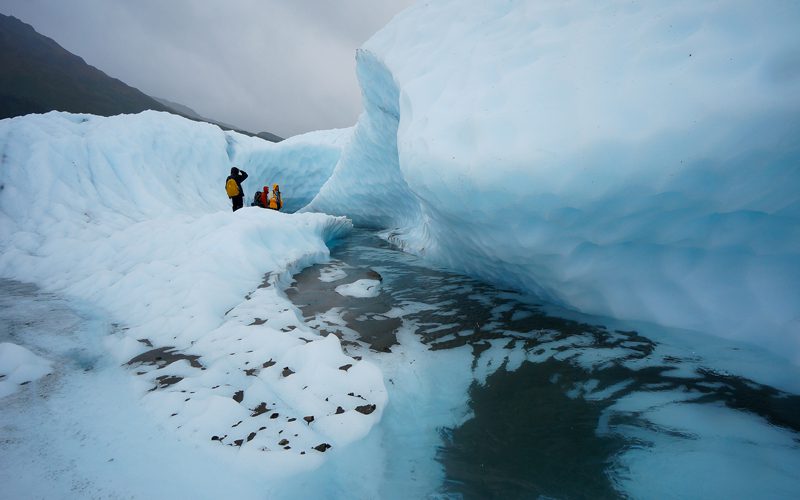
Image c/o Chewei Chang, Flickr
Size: XXL (the largest national park in the US – nearly six times the size of Yellowstone!)
How to get there: 4.5-hr drive from Anchorage
Stay/eat at: McCarthy Lodge (for primo gourmet nosh)
See: Massive mountains, icefields, Dall sheep
This expansive park on the Alaska–Canada border adjoins with Glacier Bay (below), British Columbia’s Tatshenshini-Alsek Park and Yukon’s Kluane National Park and Reserve. Its accessibility (you can drive straight in, just be wary of the unpaved roads towards the end) and established infrastructure make it an ideal park for less experienced travellers – plus it’s not as crowded as Denali. I guess that’s what happens when you’re spread out over 13 million acres.
Glacier Bay National Park
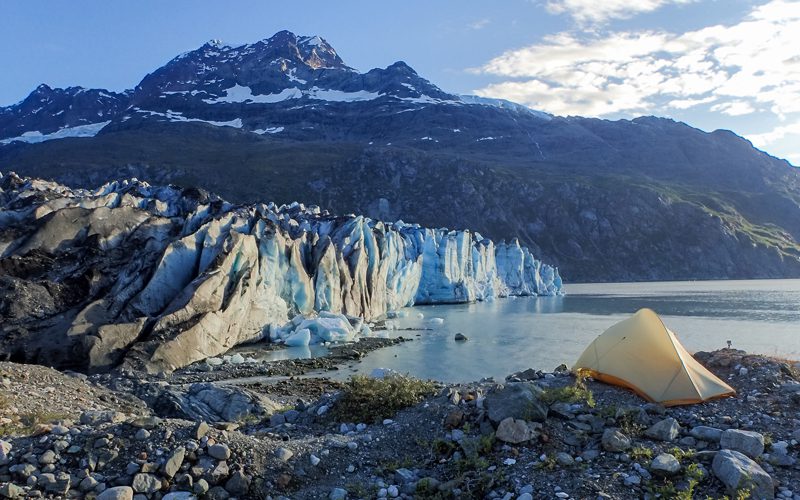
Image c/o Matt Zimmerman, Flickr
Size: L
How to get there: 4.5-hr ferry from Juneau
Stay/eat at: Historic Lake McDonald Lodge or the more rustic Kenai Princess Wilderness Lodge
See: Active glaciers, humpback whales, rainforest fauna
Glacier Bay National Park is the most popular national park in Alaska, drawing adventure junkies from all over the world. Get here by boat – there’s a convenient ferry service from Juneau that has been running since 2011, or you can kayak in from the nearest gateway town, Gustavus. Once you’re there, opt for a boat tour to witness a giant section of glacier calving into the ocean.
Lake Clark National Park
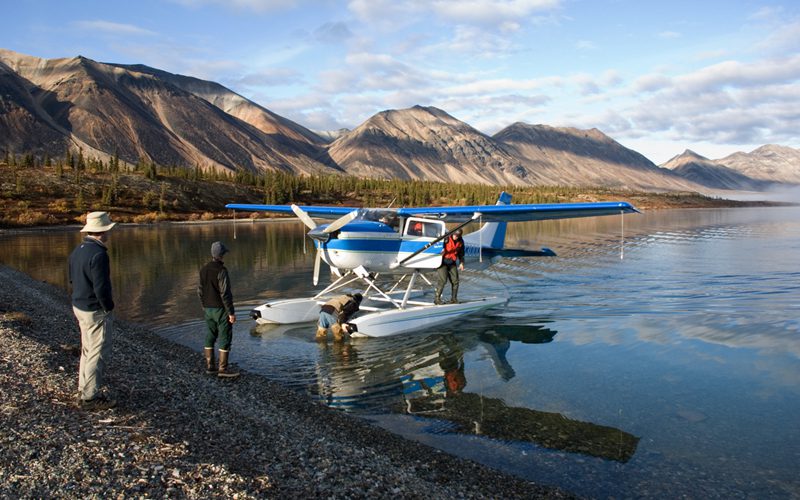
Image c/o Caitlin Marr, Flickr
Size: L
How to get there: 1-hr flight from Anchorage
Stay/eat at: Silver Salmon Creek Lodge (for salmon fishing and bear viewing)
See: Bird’s-eye views of mountain ranges and rainforests, brown bears
The one where you’re least likely to run into crowds, despite its close proximity to the more populous areas of Alaska. The main reason for this is that no roads lead into it – your best bet is to book a float plane and enjoy some incredible aerial views.
Gates of the Arctic National Park
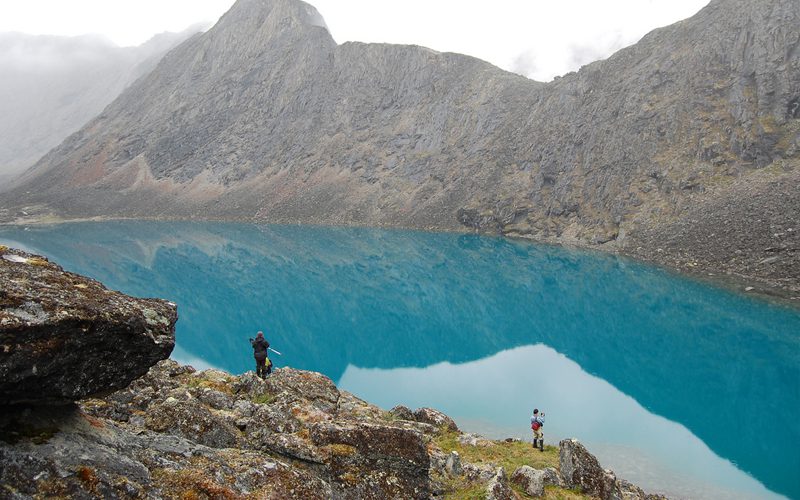
Image c/o Ilya_ktsn, Flickr
Size: XL
How to get there: 1-hr flight from Anchorage
Stay/eat at: No amenities here, so treat yourself to a hearty breakfast at Anchorage’s Snow City Café before you go.
See: Wild and Scenic Rivers, caribou, very few humans
This park is situated within the Arctic Circle, so you get round-the-clock sunshine in summer and continual night-time in winter. There’s no road access, so it’s a good option for those who are cashed-up (fly in on an air taxi) or experienced with navigating wilderness with a lack of supportive infrastructure. The cool name refers to the Boreal Mountain and Frigid Crags that resemble “gates to the Arctic” according to ye olde explorer John Marshall.
You can visit both Denali National Park and Wrangell-St. Elias National Park between June and August on Intrepid’s Basix trip Explore Alaska or our Comfort option Best of Alaska.

